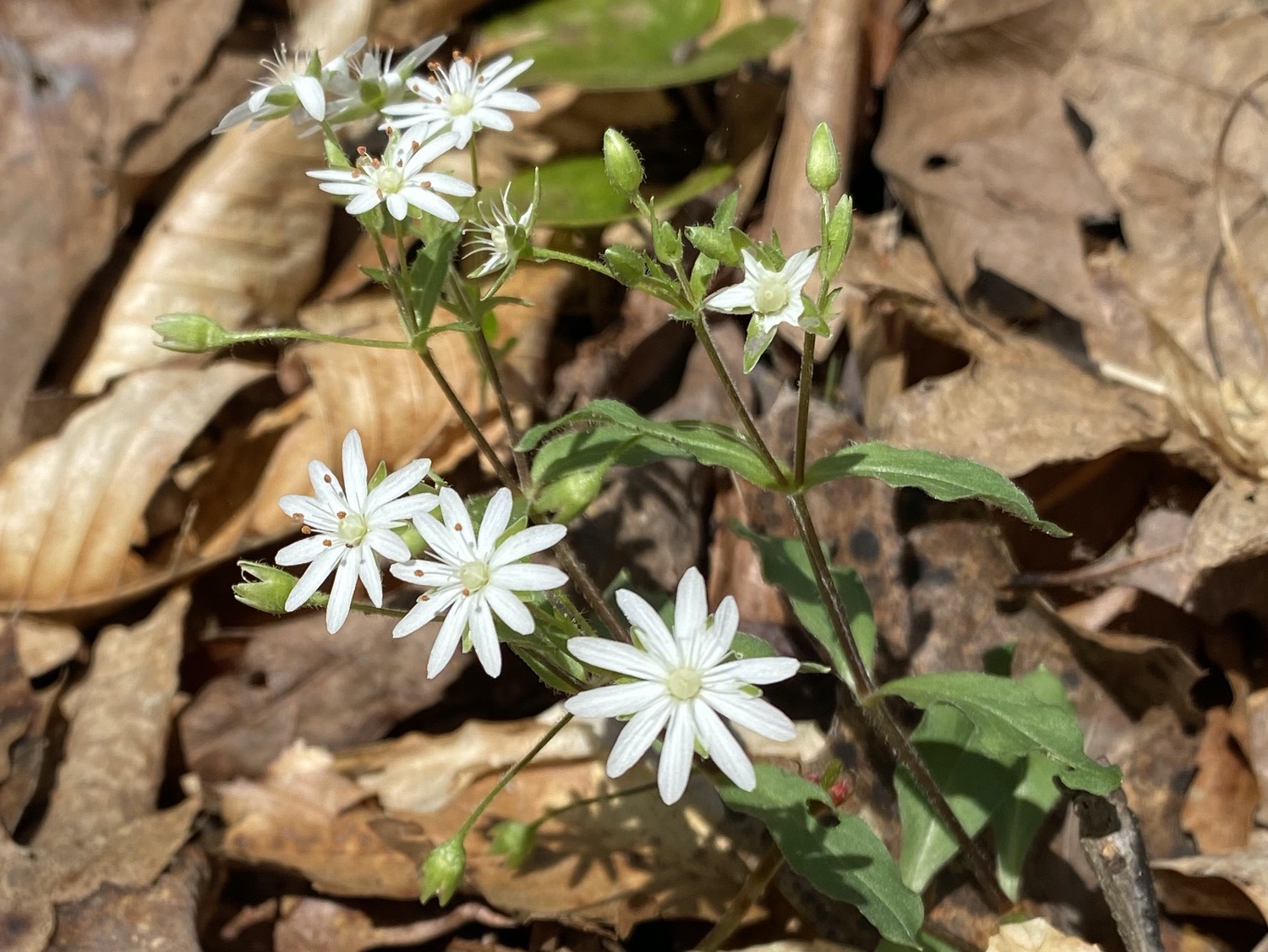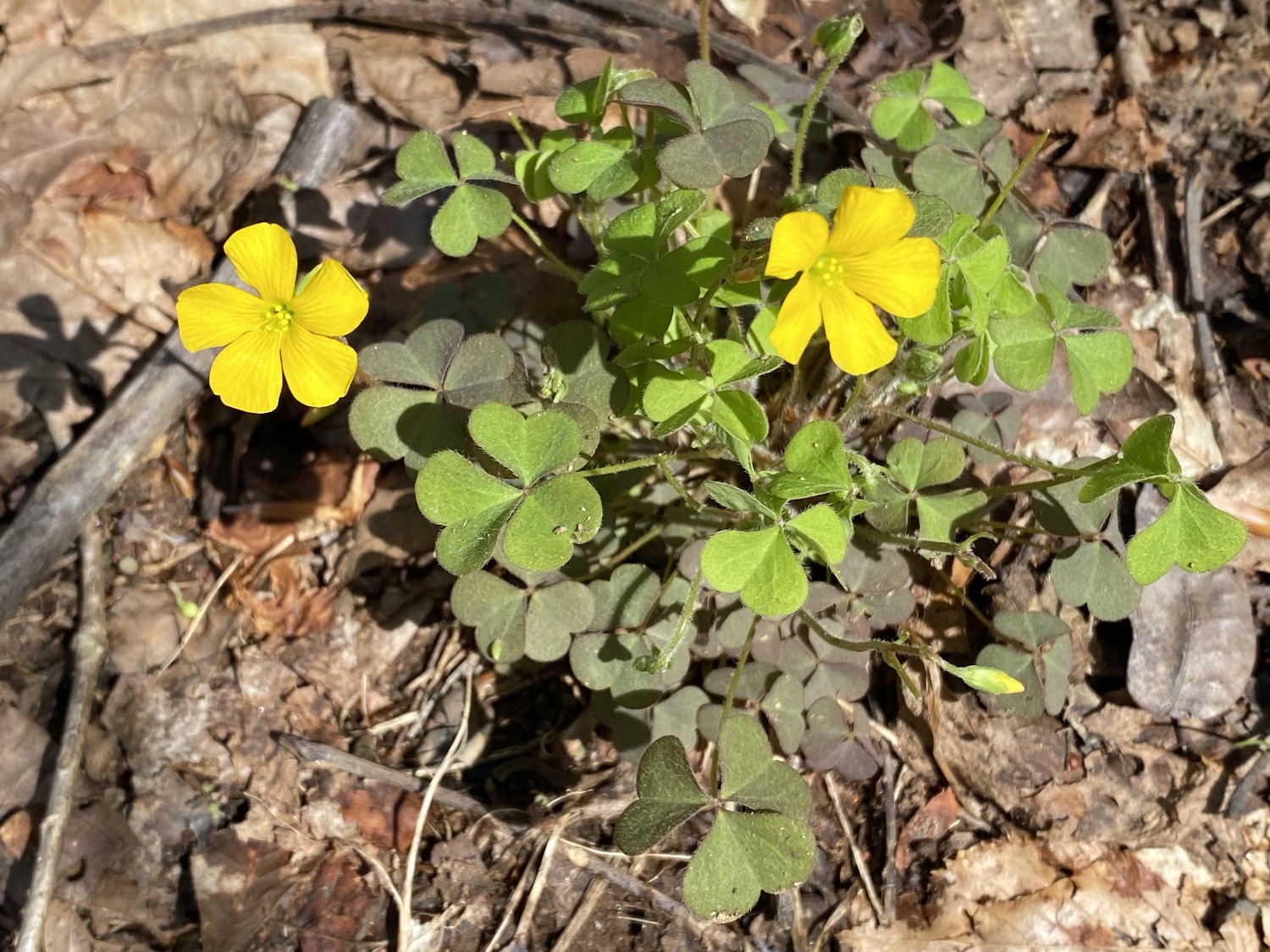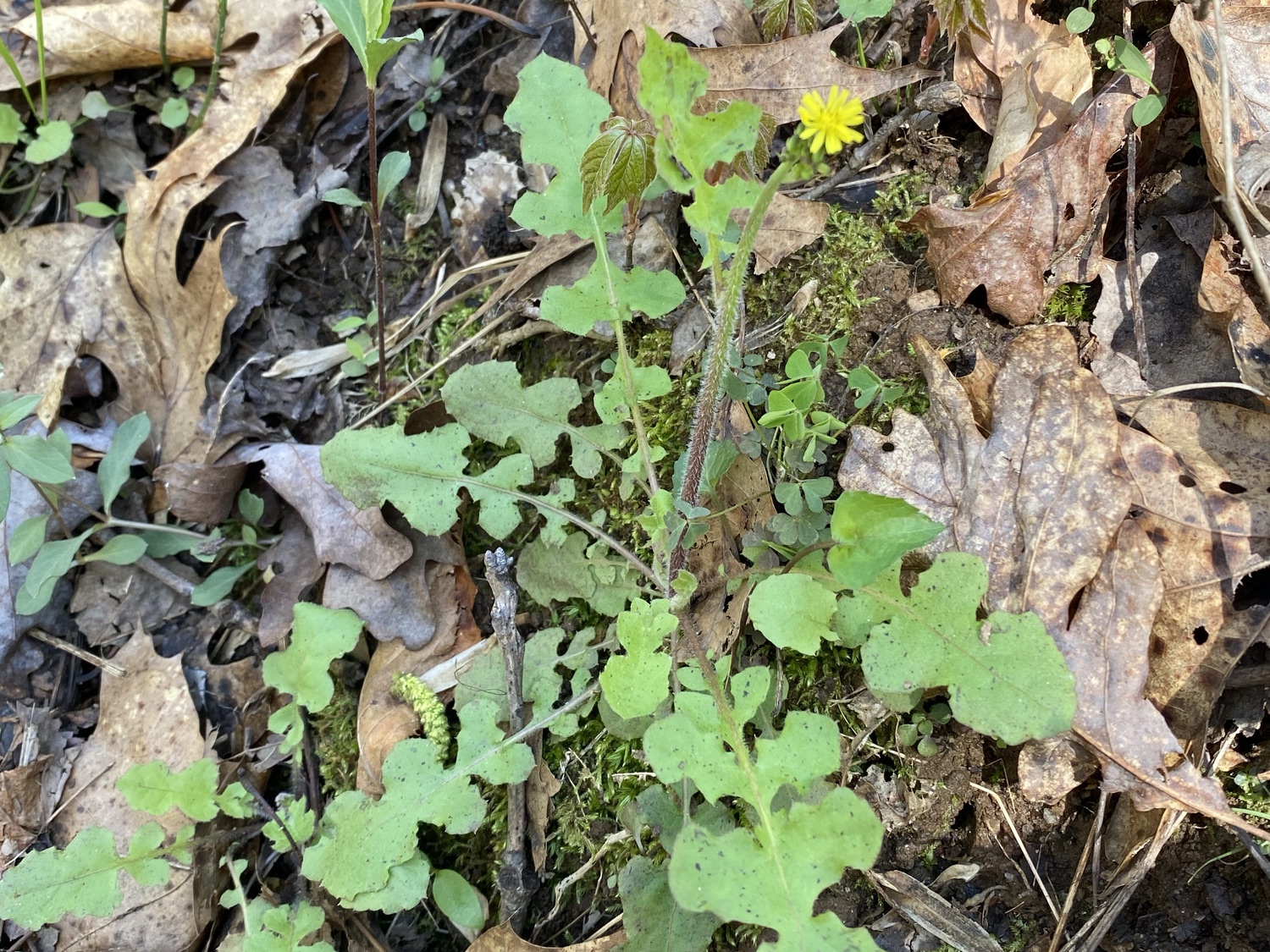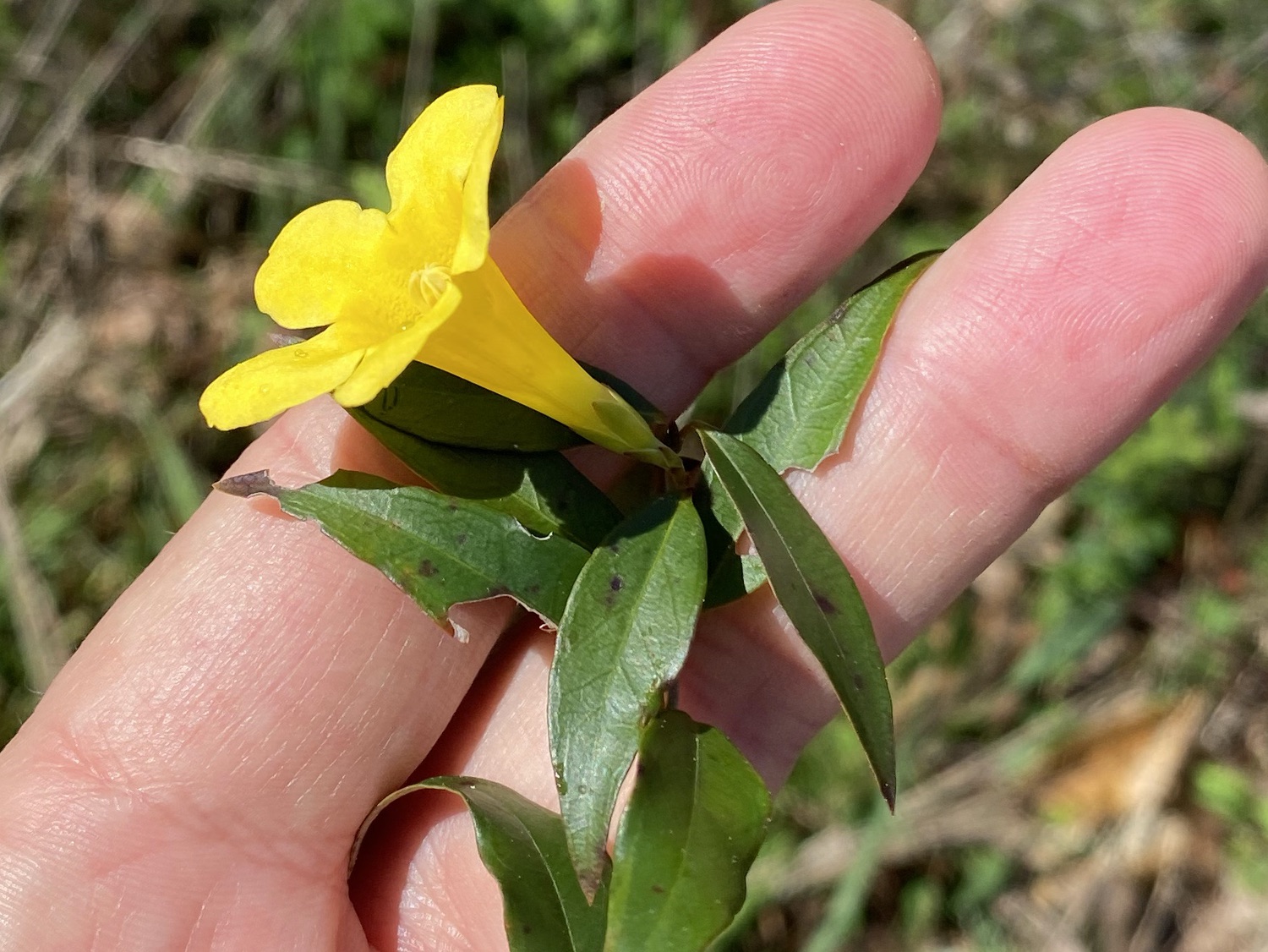SPRING WILDFLOWERS PART 3
3/27/20
The day after the rains was a great one for flowers, including a couple of new ones.
Flowers of Giant Chickweed (Stellaria pubera) were common, suggesting these must have closed up tight during the rains. This photo finally shows some good detail on the flowers, including the long stamens with their dark pink anthers.

I saw only one of these, a Yellow Wood Sorrel (Oxalis stricta), and in a relatively dry forested area near the head of a valley. The leaves look like clover, but clover is in a different family (Fabaceae vs. Oxalidaceae).

This one looks like a dandelion, and although it gave me fits identifying it (because it’s not in my wildflower books), it is called Oriental False Hawksbeard (Youngia japonica). It’s an invasive from Asia, which confused me because I found it on the bank of a small stream deep in the woods and had assumed it was native. This one has a small yellow flower reminiscent of a dandelion (as are the leaves), and what I initially missed is that the end of the stem has buds for many more flowers, unlike a dandelion. I’ve since realized that this plant is everywhere, in our yard, along our street. The stem is often much longer, branching, with many flower buds at the tips.

This is a vine I saw the other day, and it is called Yellow Jessamine (Gelsemium sempervirens). It grows by wrapping around other plants or by spreading on the ground. In many places it climbs high, and the only indication that it is around is a sprinkling of detached yellow blooms on the ground. The leaves are dark, shiny, lanceolate, and opposite. The stem (not visible here) is wiry, thin, and reddish. The flower is yellow, trumpet-shaped, with five lobes. I saw it in the power-line cut, growing in the open on some blackberry shrubs, and in the margins of forests, growing among the branches of trees.
